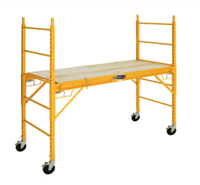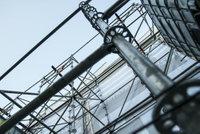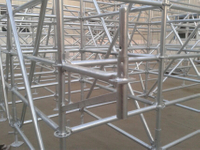Content Menu
● Introduction to Scaffolding Safety
>> Importance of Safety Training
>> Role of Supervisors
● Safe Climbing Techniques
>> Maintaining Three Points of Contact
>> Facing the Scaffold
>> Use of Handrails
● Safety Equipment
● Fall Protection Systems
● Climbing Non-Designated Parts
>> Erecting and Dismantling
>> Specialized Equipment
● Adverse Weather Conditions
● Pre-Work Checks
● Regular Maintenance and Inspection
>> Inspection Checklist
>> Role of Inspectors
● Conclusion
● FAQ
>> 1. What is the safest way to climb scaffolding?
>> 2. Can I climb scaffolding in the rain?
>> 3. What safety equipment should I wear when climbing scaffolding?
>> 4. Can I climb cross braces or vertical legs?
>> 5. How often should scaffolding be inspected?
● Citations:
Climbing scaffolding without a ladder can be challenging and risky, but there are specific circumstances where it might be necessary, such as during the erection or dismantling of scaffolding. However, it is crucial to follow strict safety guidelines to avoid accidents. This article will guide you through the proper techniques and safety measures for climbing scaffolding without a ladder, emphasizing the importance of safety equipment and proper training.
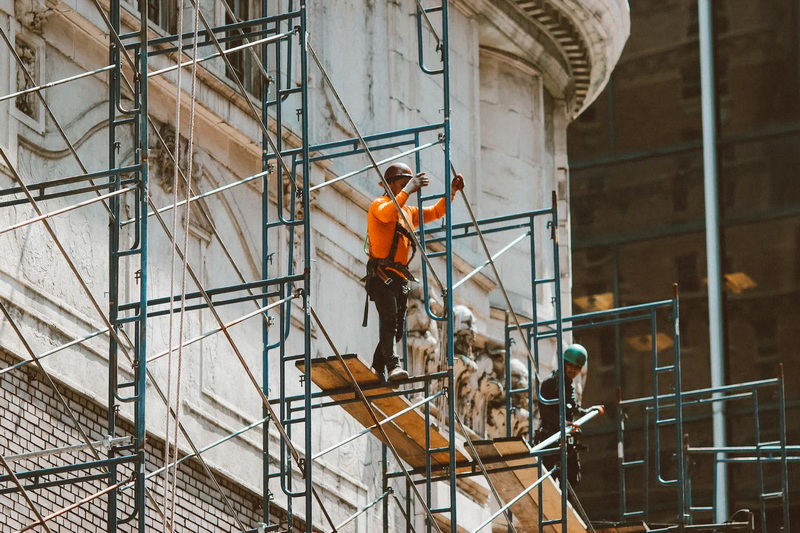
Introduction to Scaffolding Safety
Scaffolding is a temporary structure used to support workers and materials during construction, maintenance, or repair of buildings and other structures. Despite its utility, scaffolding poses significant safety risks if not used properly. The most common hazards include falls from heights, scaffold collapse, and being struck by falling objects.
Importance of Safety Training
Before attempting to climb scaffolding without a ladder, it is essential to undergo comprehensive safety training. This training should cover the proper use of personal protective equipment (PPE), how to inspect scaffolding for safety, and the techniques for safe climbing and descending.
Safety training programs should also emphasize the importance of teamwork and communication among workers. Clear communication can help prevent misunderstandings that might lead to accidents.
Role of Supervisors
Supervisors play a critical role in ensuring safety on scaffolding sites. They must ensure that all workers are properly trained, that scaffolding is regularly inspected, and that safety protocols are strictly enforced.
Safe Climbing Techniques
When climbing scaffolding without a ladder, it is vital to maintain three points of contact with the structure at all times. This means having either two hands and one foot or one hand and two feet in contact with the scaffolding.
Maintaining Three Points of Contact
- Two Hands and One Foot: This is the most common method, where you use both hands to grip the rungs and one foot to step onto the next level.
- One Hand and Two Feet: This method is used when you need to use one hand for balance or to carry a tool, ensuring that both feet are securely placed on the scaffolding.
Facing the Scaffold
Always face the scaffold when climbing. This reduces the risk of losing balance and allows you to maintain better control over your movements.
Use of Handrails
When available, use handrails for additional support. Handrails can provide extra stability and help prevent falls.
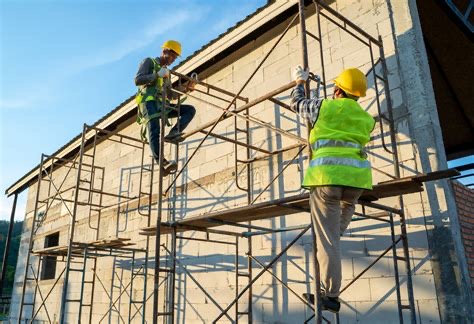
Safety Equipment
Proper safety equipment is crucial when climbing scaffolding without a ladder. This includes:
- Safety Harness: A harness should be worn at all times when working at heights. It should be attached to a secure point on the scaffolding via a lanyard.
- Hard Hat: Protects the head from falling objects.
- Non-Slip Shoes: Ensures stable footing on the scaffolding.
Fall Protection Systems
Fall protection systems, including safety nets and guardrails, should be installed around scaffolding to prevent falls and protect workers.
Climbing Non-Designated Parts
In general, climbing non-designated parts of the scaffolding, such as cross braces or vertical legs, should be avoided unless absolutely necessary during erection or dismantling. Even then, it should only be done by trained personnel who are properly secured.
Erecting and Dismantling
During these phases, scaffold erectors may need to climb vertical legs or horizontal bars. However, this should only be done while adequately tied off to prevent falls.
Specialized Equipment
In some cases, specialized equipment like aerial lifts may be used to access high areas without climbing scaffolding. These machines provide a safer alternative for reaching elevated work zones.
Adverse Weather Conditions
Climbing scaffolding in adverse weather conditions, such as rain, snow, or high winds, significantly increases the risk of accidents. Scaffolding should not be used during such conditions.
Pre-Work Checks
Before starting work, always check the weather forecast. If adverse conditions are expected, postpone work until the weather improves.
Regular Maintenance and Inspection
Regular maintenance and inspection of scaffolding are crucial for ensuring safety. This includes checking for loose or damaged components and ensuring that all safety features are functioning correctly.
Inspection Checklist
Develop a comprehensive checklist to ensure that all aspects of the scaffolding are inspected regularly. This should include:
- Structural Integrity: Check for any signs of damage or wear.
- Safety Features: Ensure that guardrails, toeboards, and other safety features are in place and secure.
- Access Points: Verify that ladders and stairways are securely attached and in good condition.
Role of Inspectors
Inspectors should be trained to identify potential hazards and report any issues promptly. Regular inspections can help prevent accidents by identifying and addressing problems early.
Conclusion
Climbing scaffolding without a ladder requires careful planning, proper training, and adherence to strict safety protocols. It is essential to maintain three points of contact, face the scaffold, and use appropriate safety equipment. Always prioritize safety and avoid climbing in adverse weather conditions.
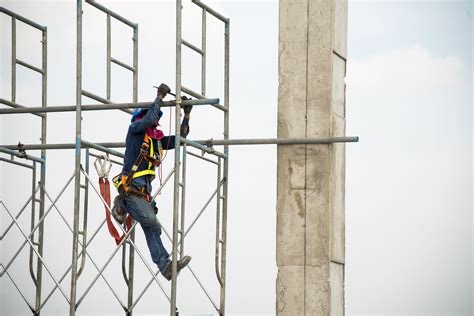
FAQ
1. What is the safest way to climb scaffolding?
The safest way to climb scaffolding is by using designated ladders or stairways and maintaining three points of contact at all times. Always face the scaffold and avoid carrying tools or materials while climbing.
2. Can I climb scaffolding in the rain?
No, climbing scaffolding in the rain is not recommended. Wet conditions can make the scaffolding slippery and unstable, increasing the risk of accidents.
3. What safety equipment should I wear when climbing scaffolding?
You should wear a safety harness, hard hat, and non-slip shoes. Ensure your harness is securely attached to the scaffolding via a lanyard.
4. Can I climb cross braces or vertical legs?
Only trained personnel should climb non-designated parts like cross braces or vertical legs, and only during erection or dismantling while properly secured.
5. How often should scaffolding be inspected?
Scaffolding should be inspected daily before use to ensure it is in good condition and all components are securely connected.
Citations:
[1] https://www.dragontruss.com/What-is-the-proper-way-to-climb-scaffolding-id45080637.html
[2] https://safetyculture.com/topics/scaffolding-safety/
[3] https://plecoforums.com/download/20180922-sentence-contextual-writing-practice-eng-txt.2714/
[4] https://www.jlconline.com/_view-object?id=00000154-2545-db06-a1fe-774d908b0000
[5] https://www.scaffoldingsolutions.com/articles/11-scaffolding-safety-tips/
[6] https://www.plecoforums.com/download/20180925-sentence-contextual-writing-practice-eng-tatoeba-hsk-%CE%B1-txt.2743/
[7] https://www.controlbooth.com/threads/potential-of-scaffold-ladder-tipping-in-this-scenario.50108/
[8] https://www.familyhandyman.com/list/12-scaffolding-safety-tips-and-handy-hints/
[9] https://bobistheoilguy.com/forums/threads/scaffold-safety.361332/
[10] https://safetymattersweekly.com/weekly-safety-meeting-scaffold-safety/
[11] https://boards.straightdope.com/t/how-do-you-climb-scaffolding/693120
[12] https://championscaffold.com/blog/scaffold-safety-dos-and-donts/
[13] https://biljax.com/12-important-scaffolding-safety-tips













